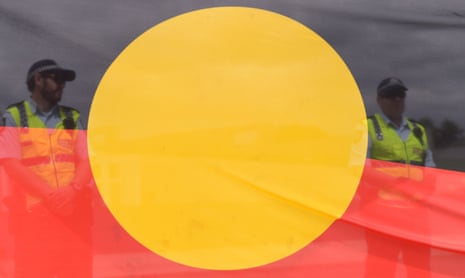A 10-year-old Aboriginal girl has taken her own life in far north Western Australia, the youngest of 19 Indigenous people to kill themselves in remote areas of the state since December.
Guardian Australia understands the girl died on Sunday in the small community of Looma, 3,912km north of Perth.
It is one of the youngest reported suicides of an Aboriginal person in WA and follows the death of an 11-year-old Geraldton boy, Peter Little, on 19 October 2014, which prompted the state government to announce a $26m suicide prevention program.
A suicide researcher, Gerry Georgatos, will travel to Looma to support the community in his role as a coordinator for the Indigenous suicide critical response unit, a $1m federally funded trial program that aims to provide culturally appropriate assistance to curb the flow-on effects of suicide.
“This tragedy has affected not only her community but surrounding communities that she had been moved around within,” Georgatos told Guardian Australia. “Many families and communities need support.”
It’s the 16th such trip he has made since taking up the position. The first was to support a community in the Goldfields, near Kalgoorlie, where three people took their lives within a month. “We buried three kids in five days,” Georgatos told Guardian Australia. “The graves were alongside each other, three in a row.”
The youngest on that occasion was a 15-year-old girl.
“It’s now a humanitarian crisis, we can’t have it go on like this,” Georgatos said. “Every child in that community, every adult in that community will know of this child’s death. If something will lead to more deaths, it’s the sense of hopelessness that follows an event like this.”
He added that if there were children as young as nine considering and sometimes carrying out suicide “then we have a humanitarian crisis”.
WA’s mental health minister, Helen Morton, said it was “devastating that a child of 10 would even consider taking their own life”. She said: “Circumstances are not yet clear but I find it deeply concerning.”
Morton said the girl was not in the care of the department of child protection, but the department had been providing support to her extended family “and will continue to do so during this very difficult time”.
“Children in WA shouldn’t be dying like this. We all have a responsibility to make sure children are safe no matter where they live.”
The number of suicides in the Kimberley has doubled in the past five years, according to a report produced by the Aboriginal and Torres Strait Islander suicide prevention evaluation project in January, after a roundtable in Broome in August.
There were about 100 Aboriginal suicides between 2000 and 2010, and more than 100 between 2010 and 2015, the report said.
The project is expected to report to federal Indigenous affairs minister Nigel Scullion by mid-2016.
Scullion said the interim advice he had received was that existing suicide response services were often not well-coordinated or delivered in a culturally appropriate way, which led to the funding of the Indigenous suicide critical response unit.
“The minister is deeply saddened by the news of the latest Indigenous child suicide in the Kimberley and it has reinforced his resolve to do everything he can to prevent suicide and the enormous grief it causes families and communities,” a spokesman for Scullion told Guardian Australia.
Wes Morris is coordinator of the Kimberley Aboriginal Language and Culture Centre which runs the Yiriman Project, a culture-based program led by elders from four language groups that aims to reduce suicide by making young people resilient in their culture. He said suicide would be raised as an issue at regional meetings to discuss the state’s remote community reform plans this week.
“What we need to be investing in is culturally appropriate programs of resilience and healing, to show young people where they fit into their culture and possibilities for their future,” Morris said.
Suicide was the second leading cause of death for Aboriginal and Torres Strait Islander children aged 14 and under in 2014, according to figures released by the Australian Bureau of Statistics on Tuesday. Indigenous children in that age group were 8.8 times more likely than non-Indigenous children to take their own life.
It was the leading cause of death for Indigenous people aged 15 to 35, where the Indigenous suicide rate was more than three times the non-Indigenous suicide rate. Nationally, the rate of Indigenous suicide is 21.3 per 100,000 people.
Georgatos, a researcher with the Aboriginal and Torres Strait Islander Suicide Prevention Evaluation Project, said the rate in the Kimberley was closer to 70 per 100,000.
Warren Mundine, chief Indigenous adviser to the former prime minister Tony Abbott, has described rates of Aboriginal suicide as an “epidemic”.
“Quite frankly, you are looking at a society in collapse,” he told the Australian after Little’s death. “I am a father and I just cannot get it through my head that at the age of eight or nine a child can’t see a future for themselves. It is unimaginable.”
